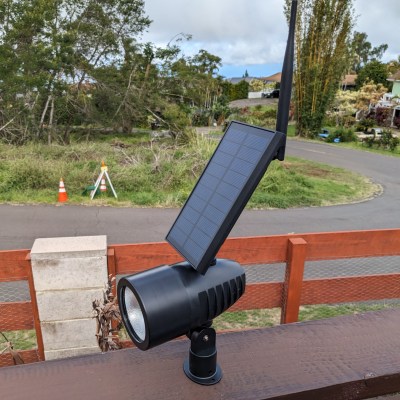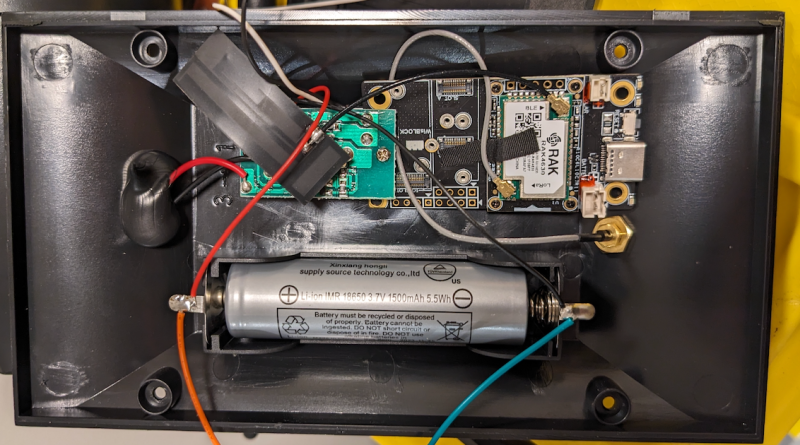We love a good deal, especially when it comes to scavenging parts for projects. Cheap outdoor solar lights are more than just garden accessories; they’re a handy source of waterproof enclosures, solar panels and batteries. This is demonstrated by [Tavis], who turned one such light into a Meshtastic LoRa communication node.

A nice feature on this specific $15 Harbor Breeze Solar LED is the roomy solar panel enclosure with integrated 18650 battery holder, allowing for easy battery swaps. [Tavis] was able to easily fit the RAKwireless modular dev board, and wire it into the light’s charging circuit. The cheap circuit is likely not the most efficient, but will probably get the job done. It’s always possible to just swap it out with a better charging board. [Tavis] also added an external antenna by using a panel-mount SMA pigtail connector.
The Meshtastic project is all about enabling text-only communications through LoRa-based mesh networks, built using off-the-shelf devices and development boards that won’t break the bank. The project has seen some incredible growth, with people all over the world setting up their own networks.
It’s not the first time we’ve seen garden lights get used in project. We’ve seen MQTT added to a PIR solar light with some clever power saving circuitry, and as a power source for Attiny85-based projects.

















meshtastic still not connect to normal network like matrix , tox or wire
I cant send message (no mQTT) from router, I can use this same network for 443 etc.
Apple AirTag have more flexibility mesh network
BLE have 300 meter distance transmission, meshtastic in town similar ;(
There is a Matrix / Meshtastic relay out there
It’s a cool idea, but by the time somebody swaps out the horribly cheap solar panel and the crummy charging circuit that rarely lasts a year (I know, having bought several versions over the years), all you’re really gaining is a sub-optimum enclosure and it would be better to just build one from scratch using a proper plastic NEMA enclosure and decent components.
You mustn’t have purchased the right versions. I’ve got two different versions of these that have lasted two and five years respectively in full sun.
The same full sun that gives me at least a week of 40c+ days each summer.
Only thing I’ve had to do is clear the cobwebs off of them.
I know that this is not a place to post advertising, but if the moderators are ok with it, could you please let us know which version lasted five years? I consult with farmers in Florida and I would love to be able to provide an affordable way to remotely monitor sensors for things like soil moisture and conductivity (which in our sand gives you a ballpark idea of when you need to fertilize). Good for their budgets and everyone’s ground water if they only water and fertilize when needed.
I would love to talk with you privately because I worked on a similar project for cranberry growers up here in New England. We were solving a different problem of flooding the fields when the temperature dropped in order to keep the berries or flowers from freezing.
I’ve bought units ranging in price from $10 each to $40 each. They all stopped working in less than 18 months (some as little as six months). The solar cells were all crummy, and some leaked enough to corrode the innards.
I see another possible advantage. They look like outdoor lights. A bonus in an HOA where even your drapes must be a certain color. It might also reduce theft a little.
It would be interesting to use this with something like matter or just keep lora and use a gateway so you can control the lights remotely. Thinks like set the time for on and off or get battery life reports. I would love to have the lights go out at like midnight and on at say 5am. Nice job.
Why did you use the solar charger rather than the one built into the RAK?
Just did this by soldering the LilyGo disaster radio leads to the battery holder. Works and charges like a dream. This battery holder, solar panel, and enclosure is cheaper than the just the battery + shipping alone. Super fun project. Thanks Tavis!